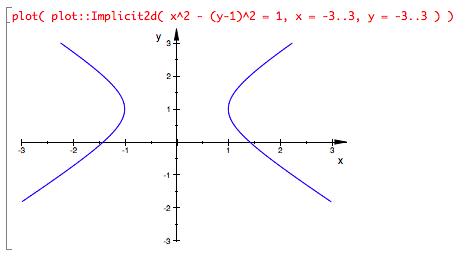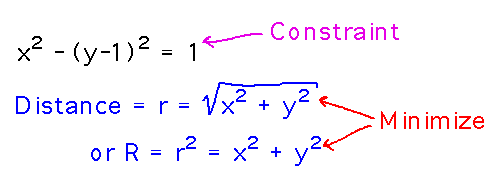Misc
New Things in Canvas
There’s now a set of sample exam questions with solutions available on Canvas.
There’s also a table showing how I converted numeric grades to letter grades last time I taught this course; the conversion won’t be exactly the same this semester, but historical information might give you some sense of how you’re doing.
Problem Set 7
On the chain rule for partial derivatives, directional derivatives, gradients.
See the handout for details.
Questions?
Finish Absolute Extreme Values
For z = x3/3 - x2 + y2 + 2y on -3 ≤ x ≤ 3, -2 ≤ y ≤ 2
Critical points:
- (0, -1), z = -1
- (2, -1), z = -7/3
Candidate extreme values on boundary:
- (-3, -1, -19)
- (3, -1, -1)
- (0, -2, 0)
- (2, -2, -4/3)
- (0, 2, 8)
- (2, 2, 20/3)
What more do we need? Values of z at the corners!
- (3, 2, 8)
- (-3, -2, -18)
- (-3, 2, -10)
- (3, -2, 0)
Now look for the minimum and maximum z values in all these points, and get...
- Maximum = 8 at (0,2) and (3,2)
- Minimum = -19 at (-3,-1)
Key Point
The process for finding absolute extremes; in particular remember to check boundaries and corners.
Lagrange Multipliers
Section 4.8.
A method for solving optimization problems with a constraint, i.e., problems in which you want to minimize or maximize something, but have to do it while preserving some relationship between the variables. In calculus 1 you may have seen some such problems, in particular ones where the constraint lets you express the problem as a single-variable one. Lagrange multipliers allow you to solve some optimization problems that can’t be turned into single-variable problems in this way.
Example
Find the points on the hyperbola x2 - (y-1)2 = 1 that are closest to the origin.

While not described as such in the problem, there is a function here to minimize (i.e., an “objective function”), namely the distance from the origin to point (x,y), and a constraint on x and y.

So we can use the method of Lagrange multipliers, as described in the reading, to solve this. (We could also use the constraint to deduce that x2 = 1 + (y-1)2 and solve it as a single-variable problem, but we’ll use it as an opportunity to look at Lagrange multipliers instead.) Work it out in class or at least before Wednesday’s class, and come with a solution or questions we need to discuss.
Key Points
Lagrange multipliers as a technique for solving optimization problems.
Next
Finish Lagrange multipliers.
Review questions / requests for the exam.